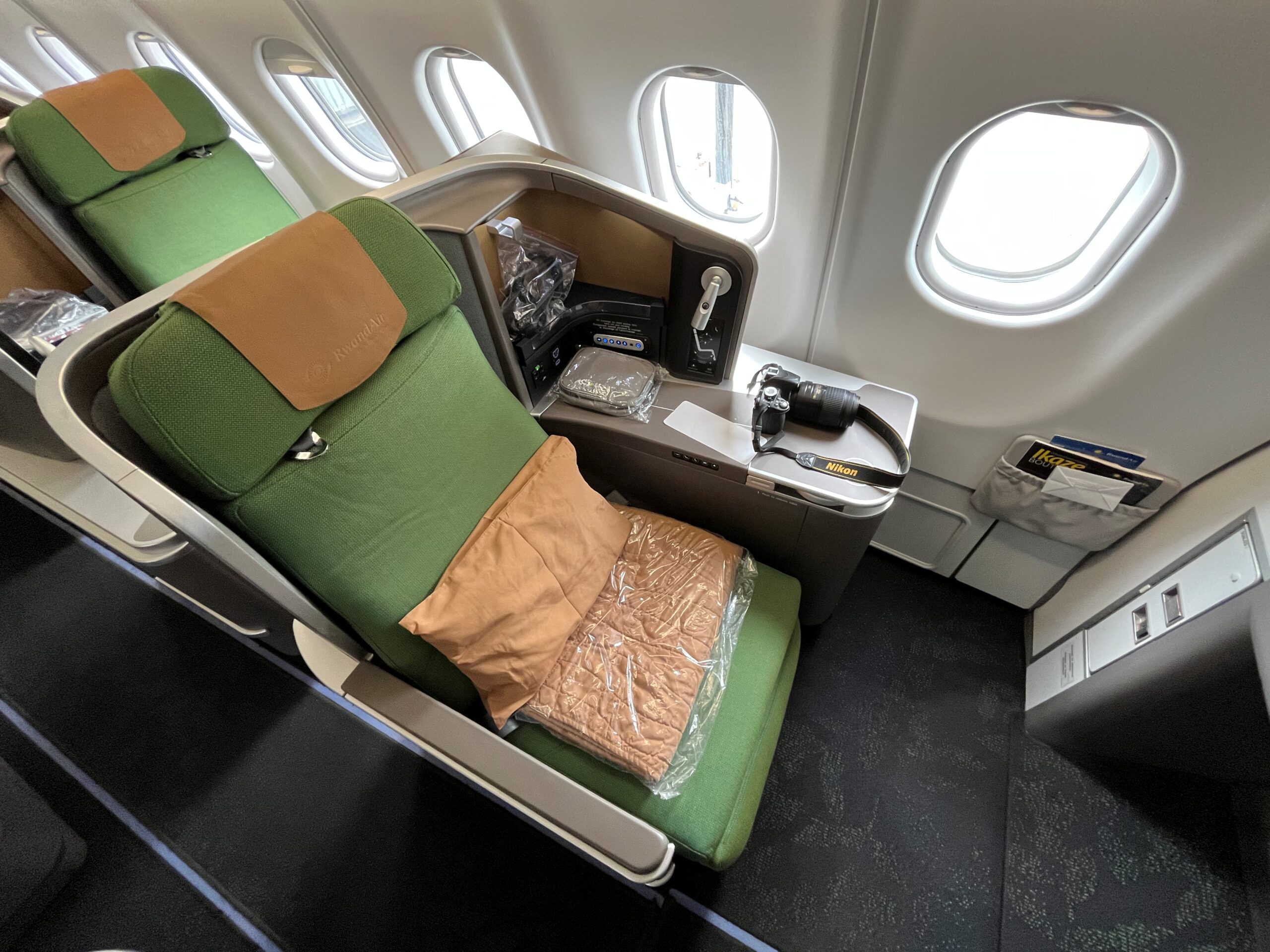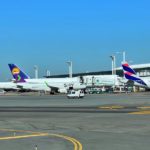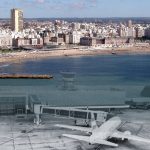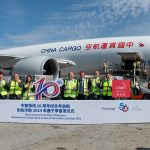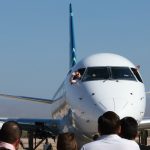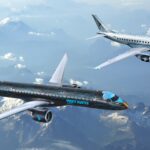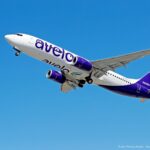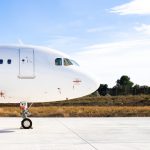Rwanda has come a long way since the 1990s. There is still a long way to go to elliminate poverty, but the country has made important advances in the last few decades (even if numbers are disputed), growing GDP per capita at relatively high rates and reducing poverty at a relatively steady rate.
Going to the future, their government thinks that improving their connectivity, as a landlocked nation fairly far from several centers of capita, has to be one of the country’s focus if it wants to become a strong service-based economy. From this, RwandAir was born in the early 2000s as the country’s flag carrier.
They currently operate, according to Planespotters.net, a fleet of two Dash-8-200 turboprops, two CRJ-900 regional jets, two Boeing 737-700, five 737-800 (one for cargo), one Airbus A330-200 and another A330-300, with a second A330-200 about to join the fleet.
So it was time for us to fly RwandAir, and see if their product lived up to the expectations we had in mind on the run-up to the flight.

The plan was to head to Johannesburg to test RwandAir’s product and their hub in Kigali Airport. That would be quite an oddysey up to South Africa’s largest city, with planned stops in Brussels, Kigali and Lusaka before we finally arrived in JoBurg.
Part one: London-Brussels-Kigali (you are here)
Part two: Kigali-Johannesburg
Part three: photogallery of the trip
After flying with Kuwait Airways from Manila, we stayed another night at the Renaissance. It’s fantastic value for money by the way, as this is your usual view from the window:
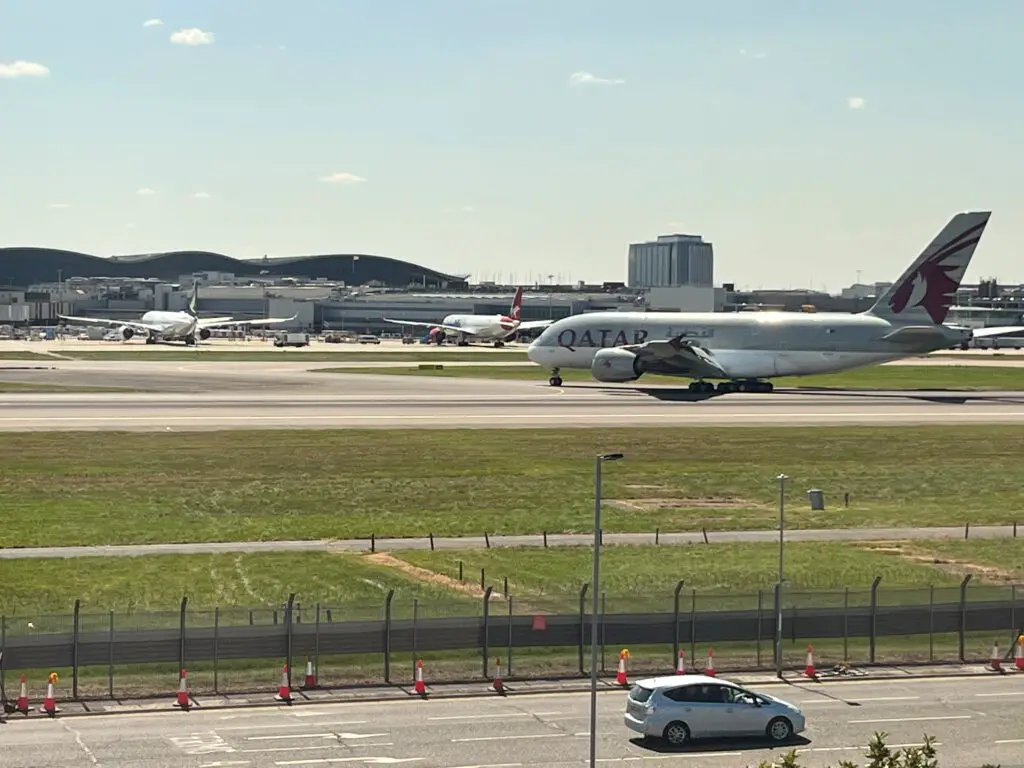
The ride from the hotel is quite easy with the HotelHoppa shuttle. Quite expensive (GBP5.50 for a 10-minutes bus ride), but I think it’s better than catching an Uber.
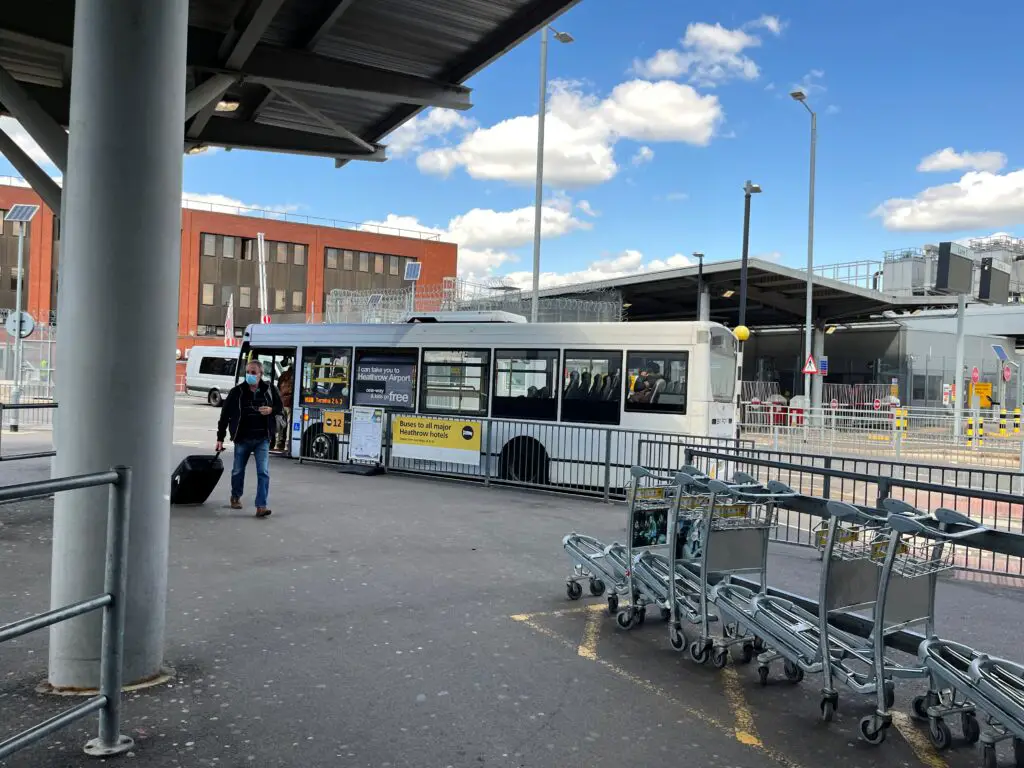
In Heathrow, RwandAir operates from terminal 3, which is Virgin Atlantic’s main base — the British carrier have a separate check-in area which they share with Delta.
WB701 LHR-BRU
As for RwandAir, some four hours before departure, check-in opened. Since we were travelling on Business Class, we were on the priority line, being the first ones to be greeted.
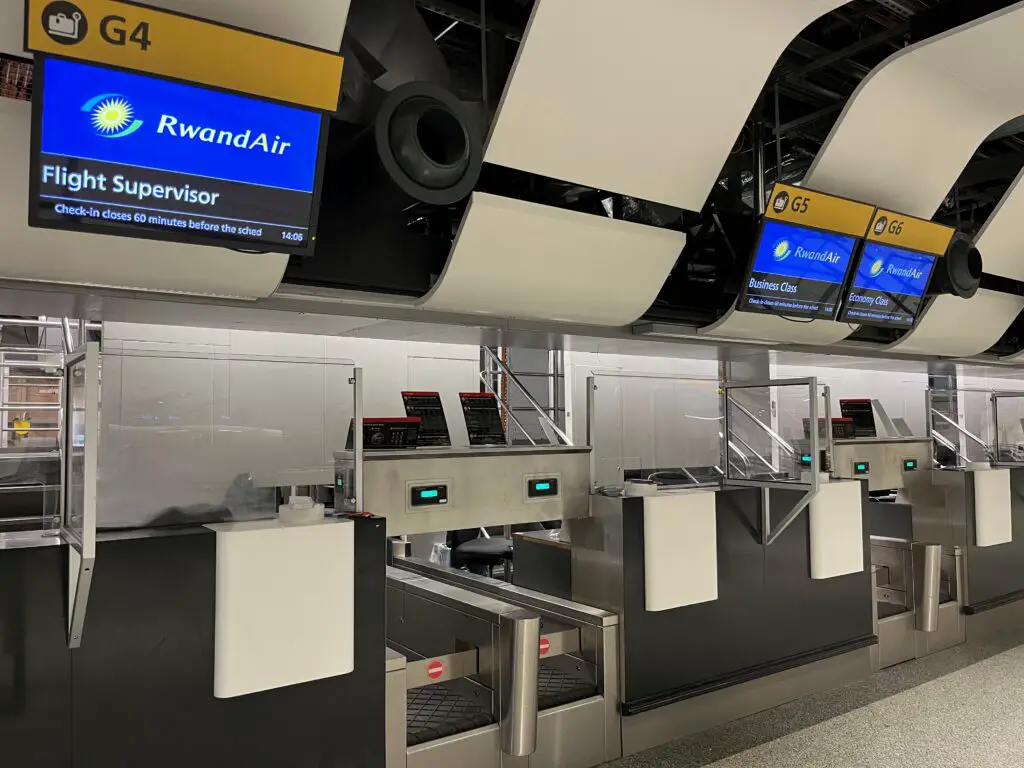
I’m not sure if she was training or what, but the check-in agent was very grumpy. We had our boarding passes very quickly, but they were enough only for the Brussels-Kigali hop, not for the London departure.
So when we got to the automatic gates before safety checks, our boarding passes could not be read because we were in the wrong departure airport.
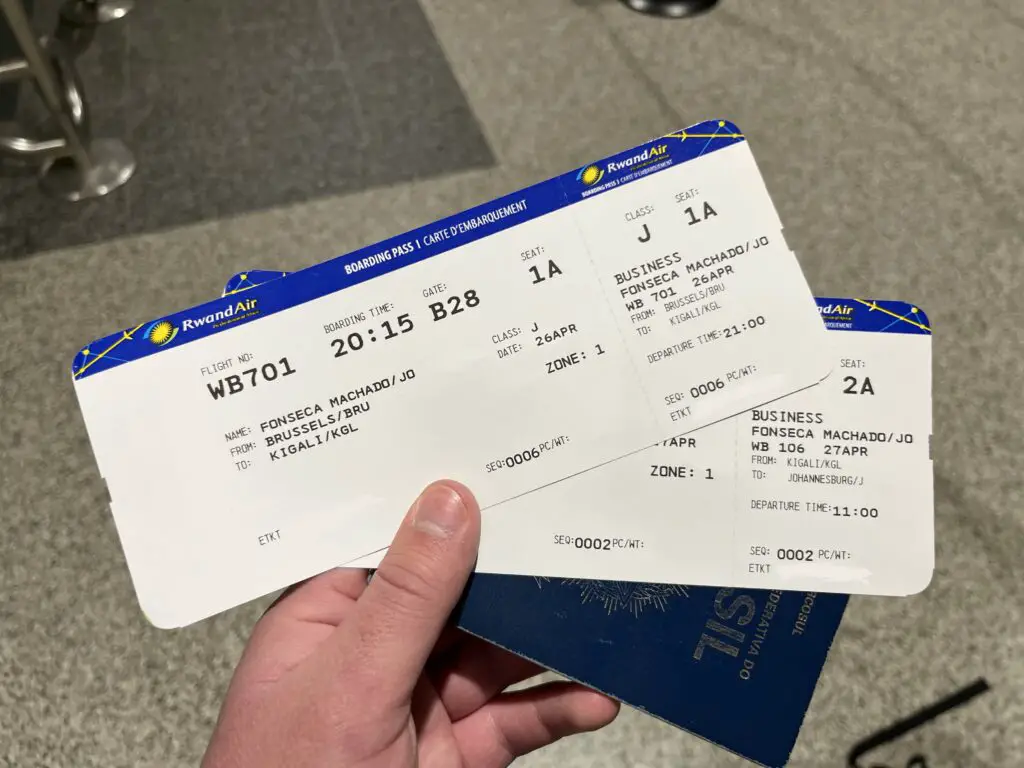
We returned to the check-in agent who grumped again and then printed the boarding pass from London too. Fast track helped us and in five minutes we were past security checks.
Heathrow is always a pleasure to fly from — okay, it might be huge and need lots of walking, but it is just a constant of so many flights to so many places. The confluence of people from all parts of the globe is just fascinating, and a reminder of how wonderful this industry is.

In London, RwandAir uses the Nº 1 Lounge. It was full so we had to wait a little to enter, but there was no line whatsoever. As soon as a couple left the place, we were allowed in.

We still had some hours to spare before boarding, and that lounge was a great place to do so. There were also some very dirty windows facing the runway, so entertainment was guaranteed.
I had a curry from the buffet, and got me a glass of beer to drink while doing some planespotting. Talk about quality time.
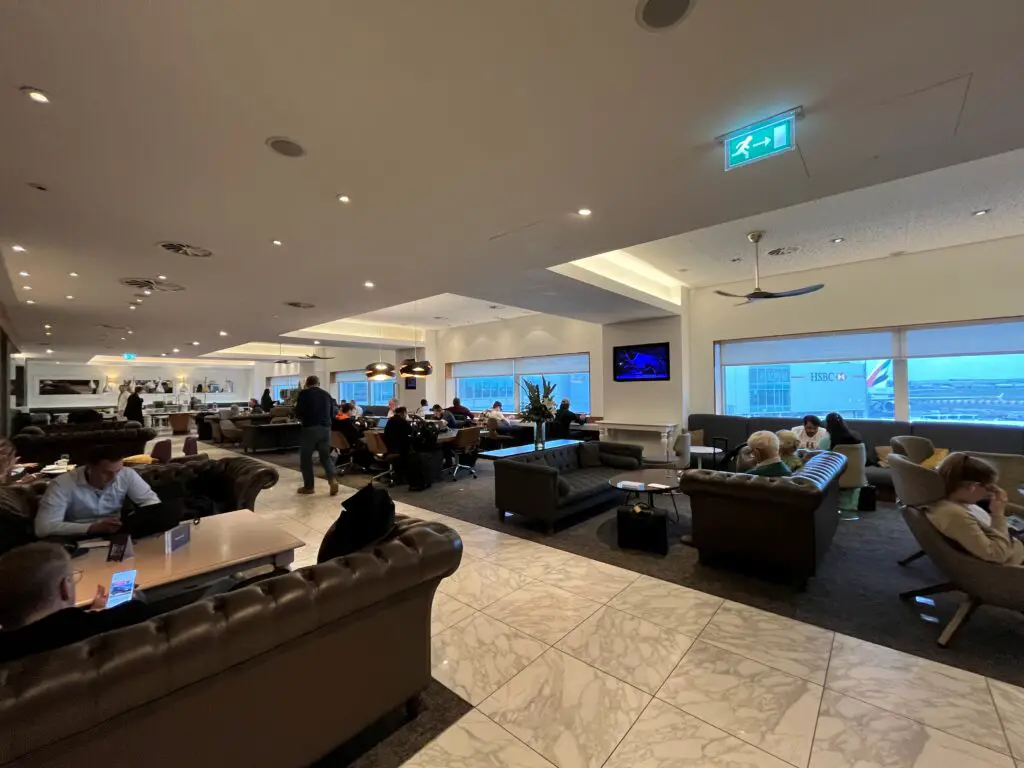
As the gate was announced, we started walking towards it. Terminal 3 is huge, so the walk lasted some 25 minutes. It didn’t help that our aircraft was parked at the end of its pier, but anyway. There was time to snap a picture of this Royal Jordanian 787. Definitely one of the best liveries around.
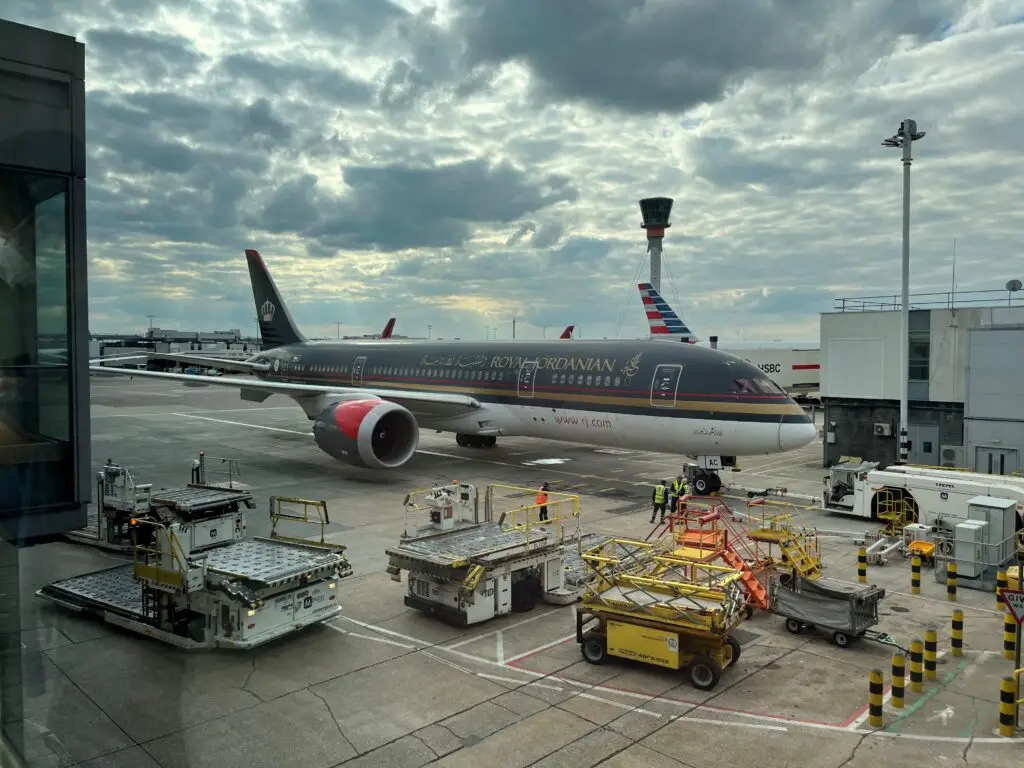
While the terminal definitely looked crowded, our pier was not, at that time.
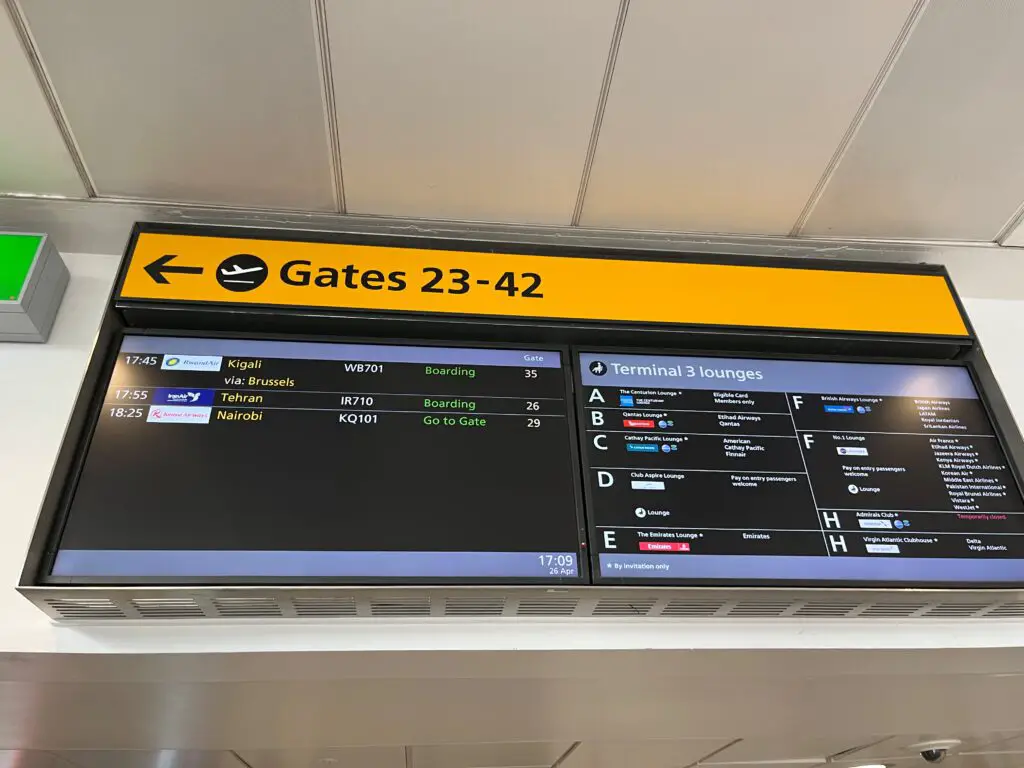
And here was our plane for today’s flight: 9XR-WN. Named «Ubumwe» (Kinyarwanda for «union»), it was delivered brand new to RwandAir on September 2016, and it has been flying to the country’s national airline ever since, according to Planespotters.net.
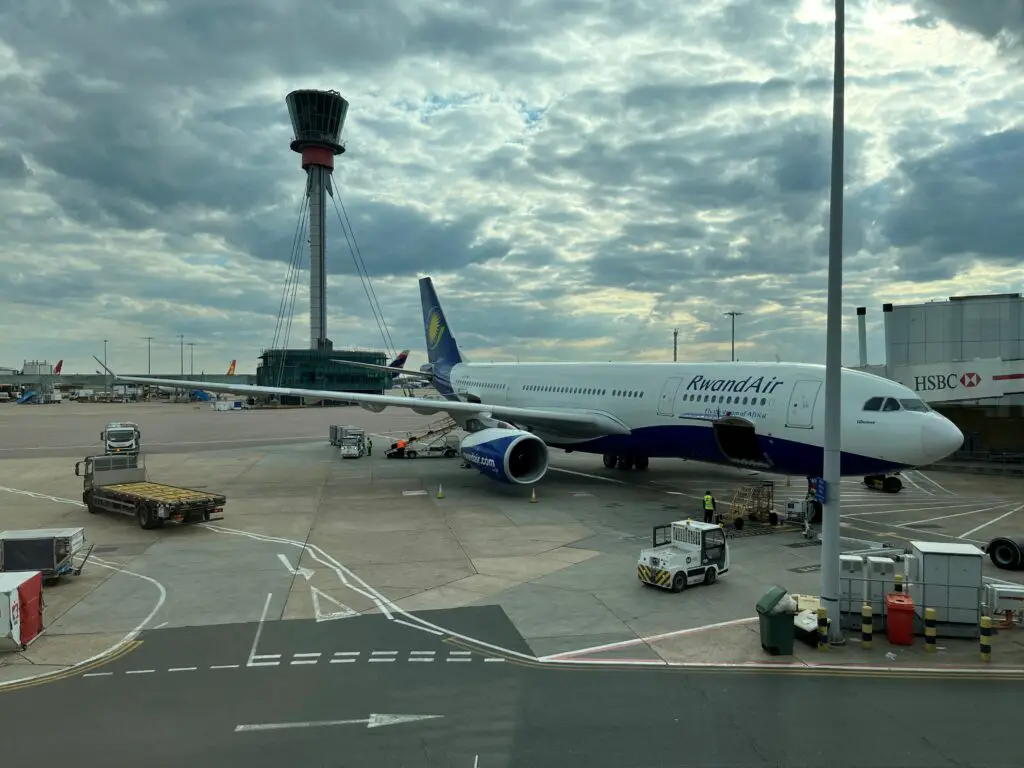
Such a nice sight with the control tower in the background overseeing Heathrow’s apron — and the line of Virgin Atlantic’s widebodies in the back guarding the ramp.
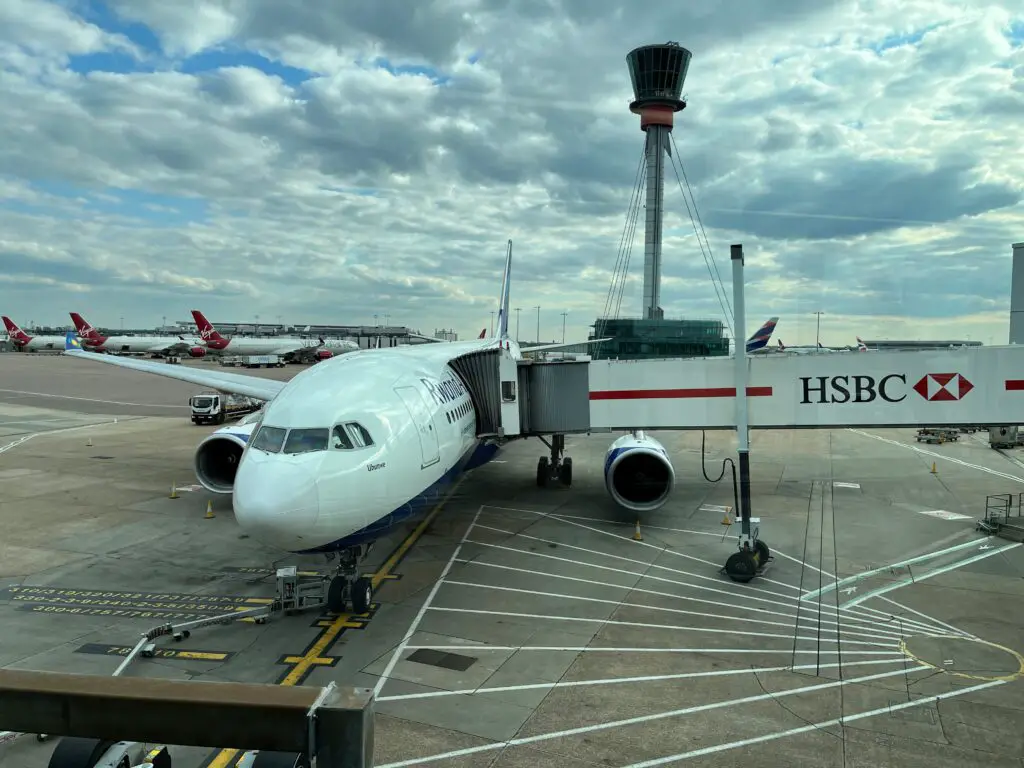
Boarding was already happening by then, though the flight was not really full. Because RwandAir does not have rights to sell tickets for the London-Brussels leg, the flight used to depart half-empty from Heathrow, as a large part of traffic to Kigali came from Brussels.
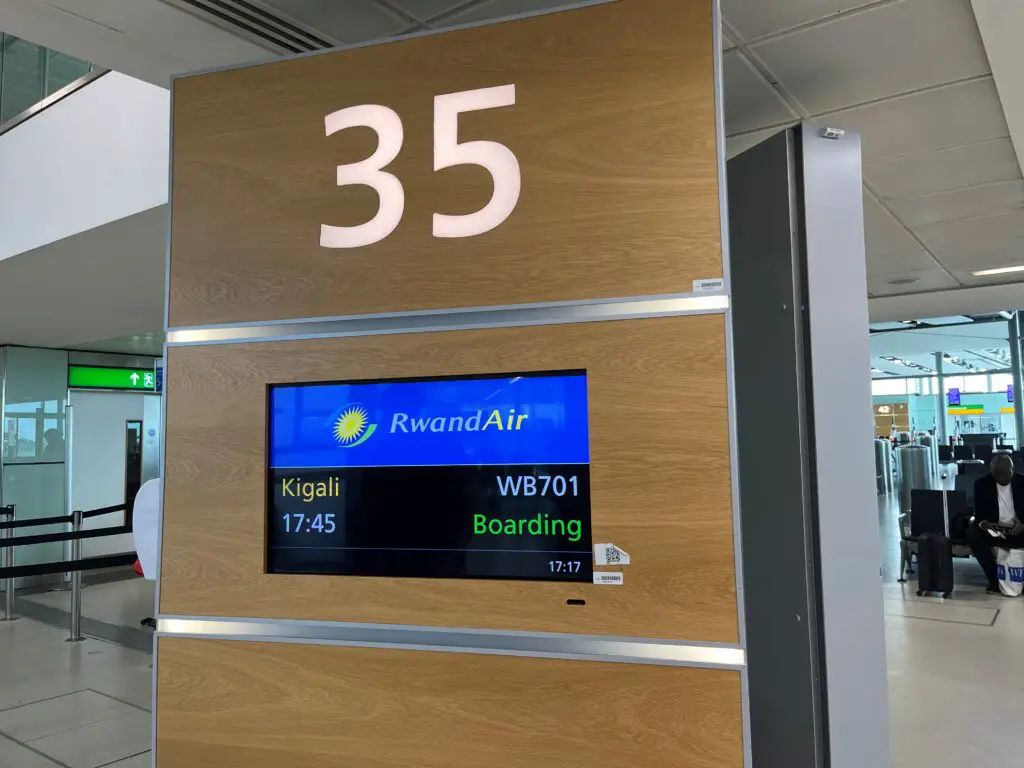
Given the light load from Heathrow that day, boarding was almost ending by the time we got to the gate.
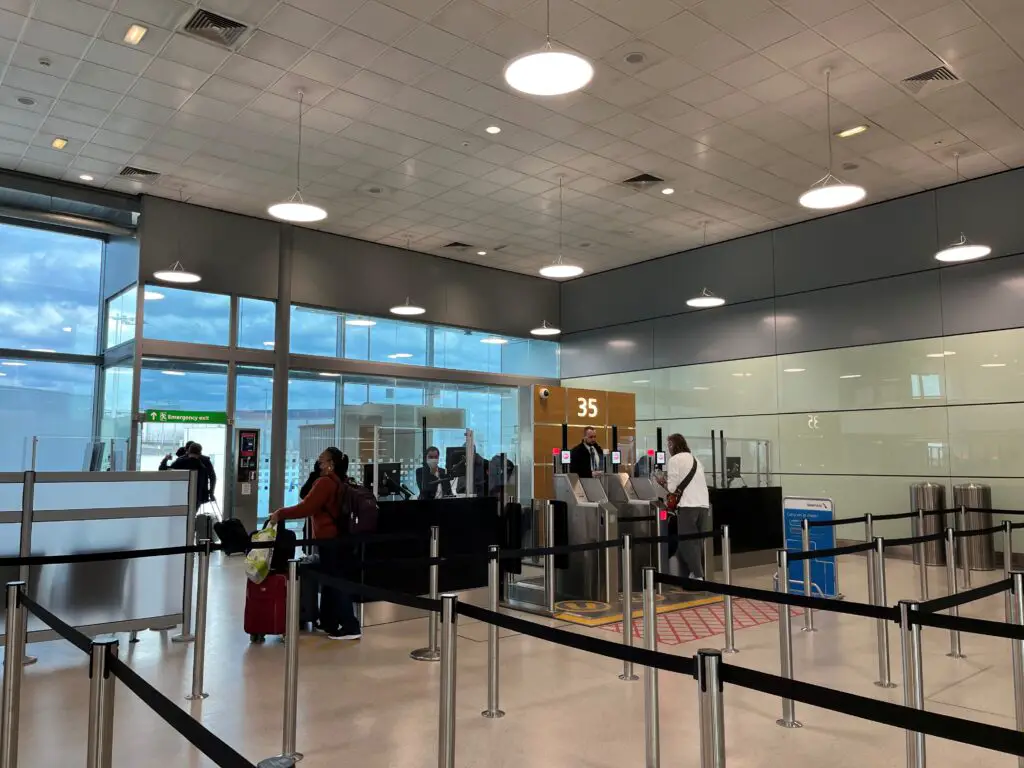
One last picture before boarding the aircraft…
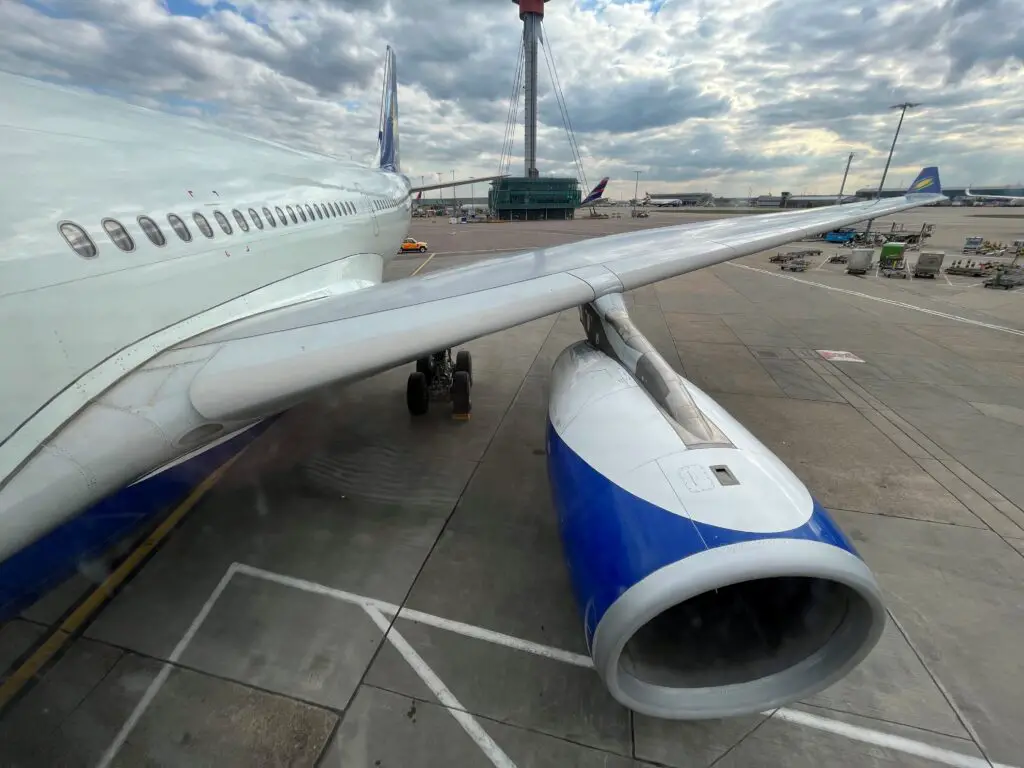
…and we were greeted by a smiling flight attendant (you could notice despite the mask usage, who was still mandated by then), who directed us to our seats.
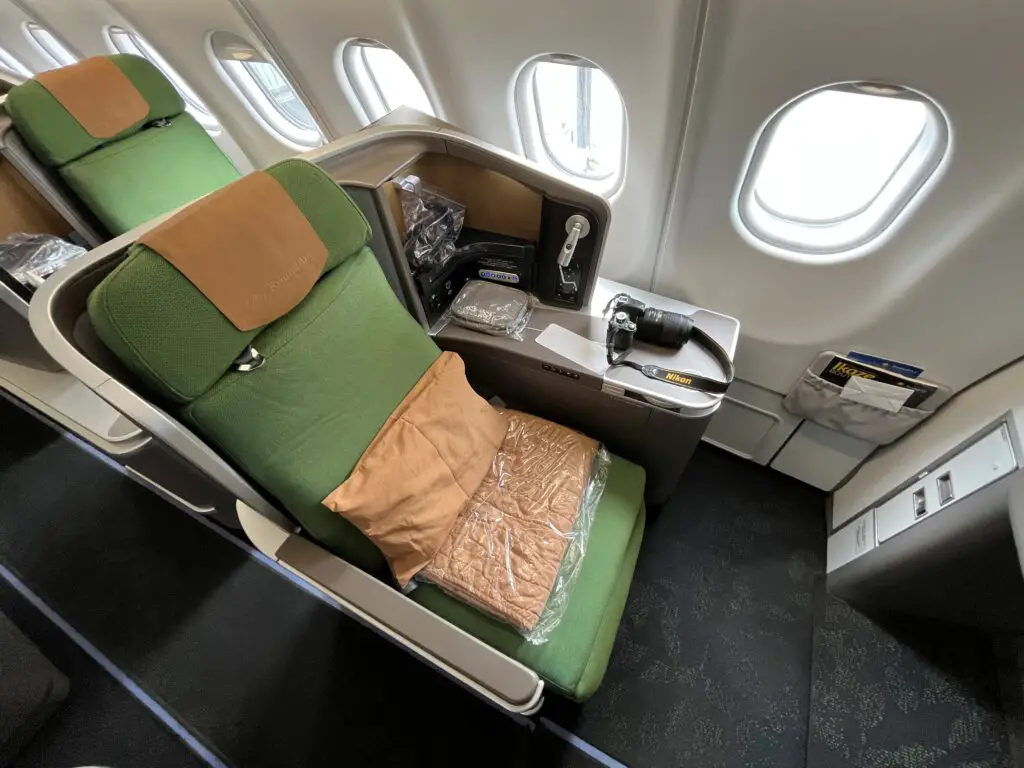
The seats, and the cabin for that matter, were truly beautiful — the color selection, I think, could not have been better. But besides the good-looking aspect, they were also displayed giving full aisle access to all customers, so that was even better.
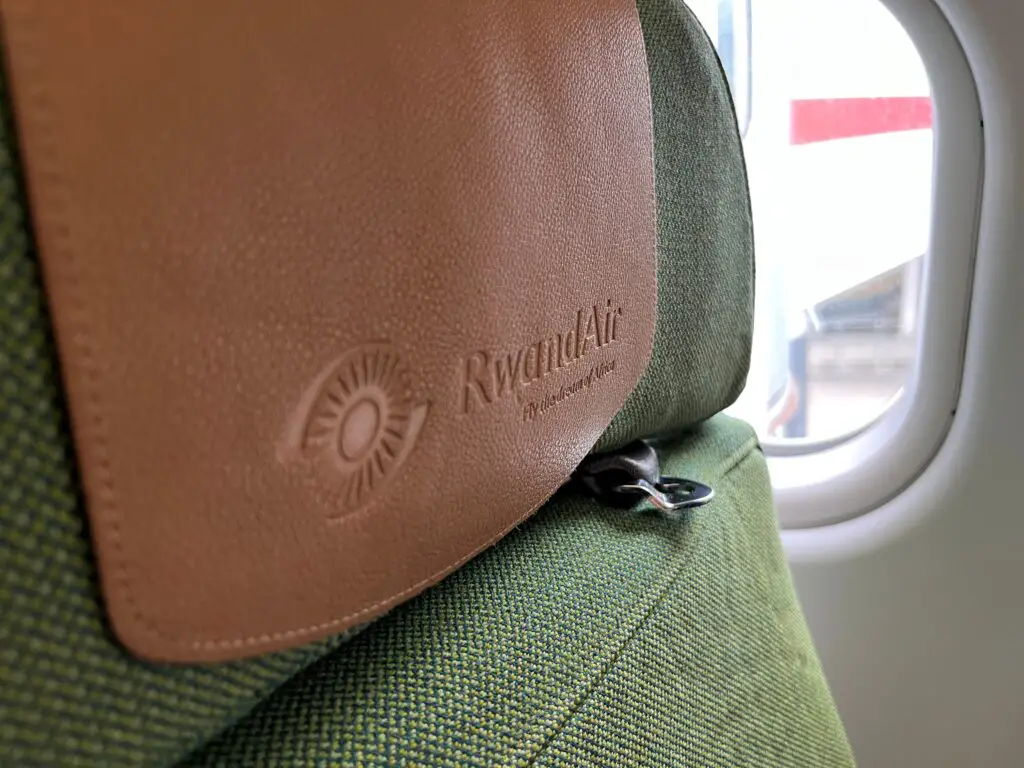
Because boarding was quite quick, and the fact most Business Class passengers were boarding in Brussels, I managed to snap some pictures of the empty cabin.
For this first leg, we would have six passengers in Business Class, only 48 in Economy and 14 crewmembers.
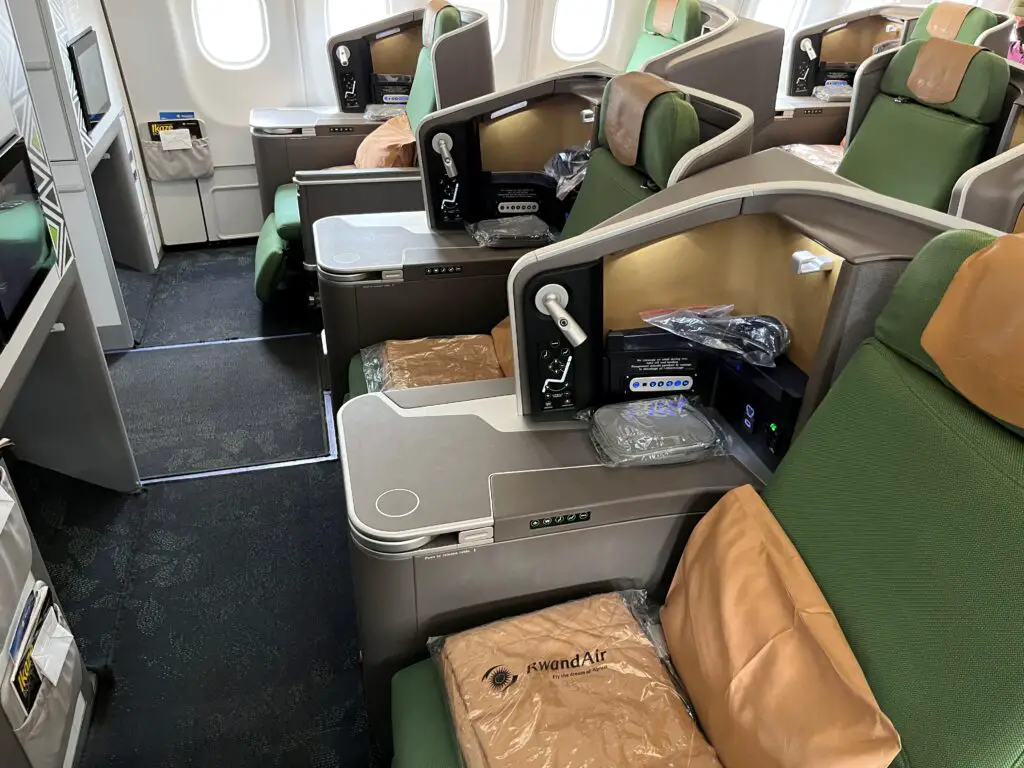
RwandAir’s A330-200 is set very generously with respect to seats. There are 20 Business Class flat-beds and 224 seats in Economy, with a number of the first few rows in Economy Class being set for further seat pitch.
As a comparison, in Brazil, Azul’s densest A330-200 is configured for 20 passengers in Business — the same as RwandAir — and 252 in Economy.

In my seat, there lied subpar headphones, the ammenity kit…
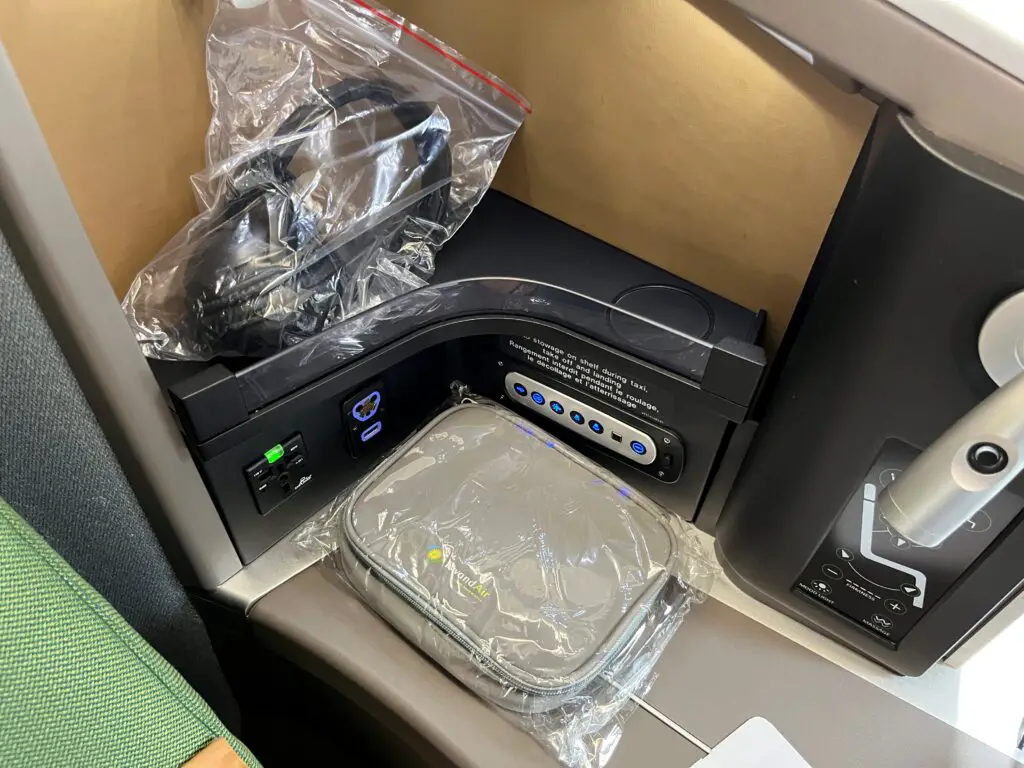
…a pillow and a blanket.
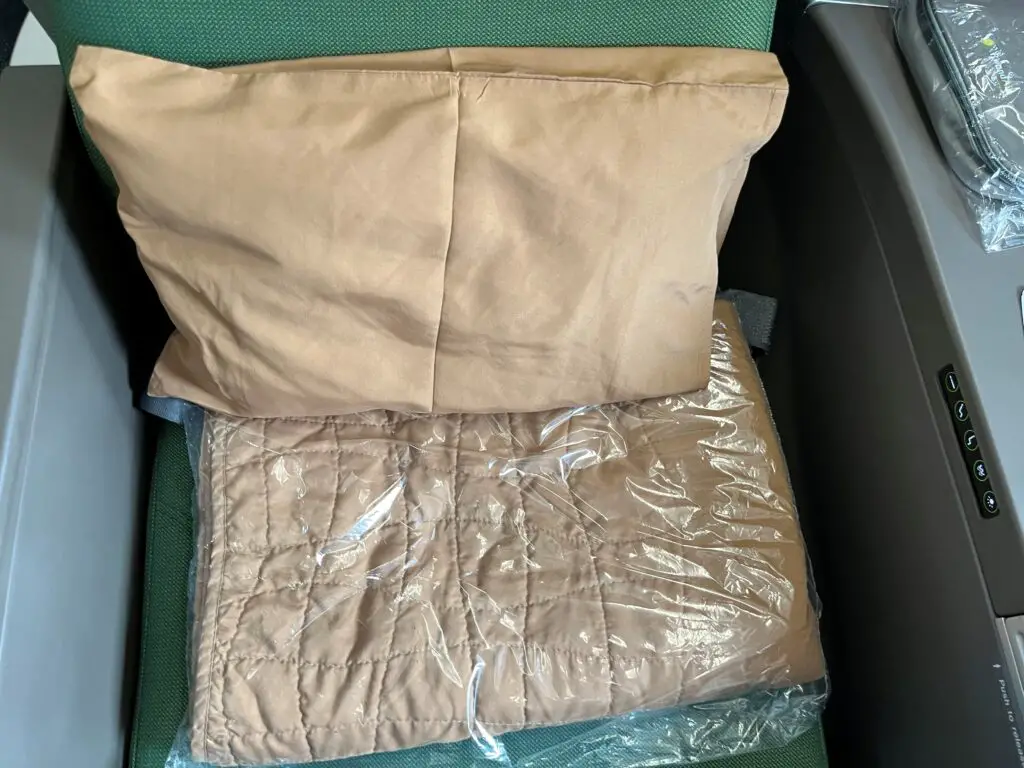
Before we pushed back, the FA passed serving welcome drinks — either white or red wine or juice. I got the white wine, which was nice.
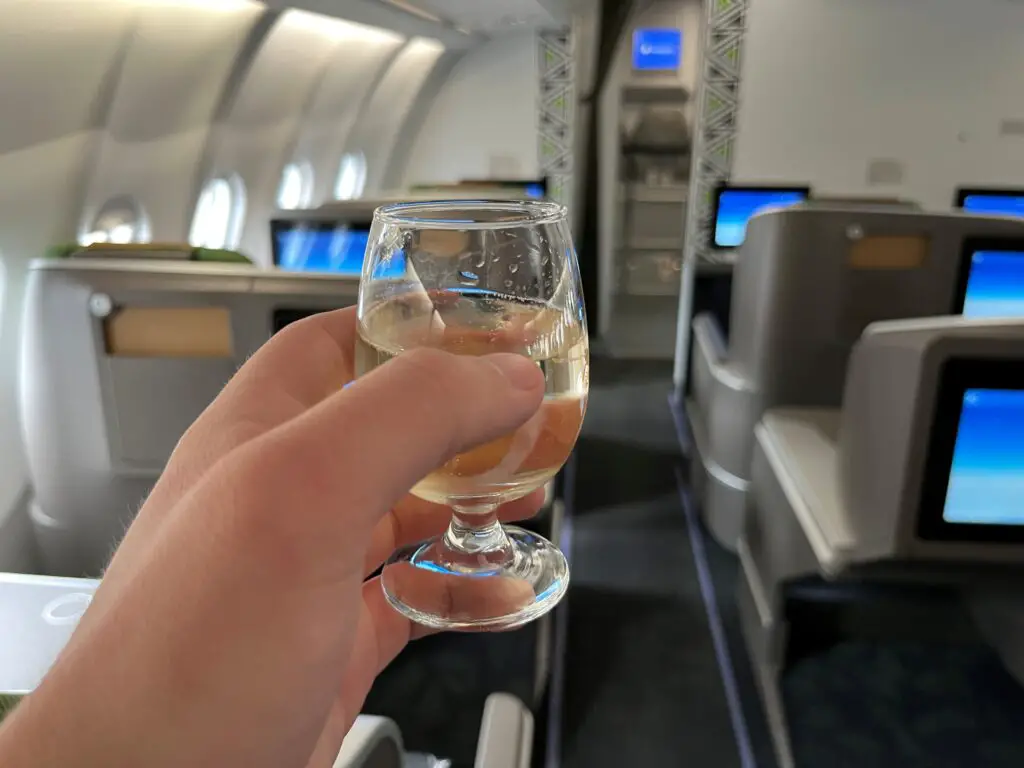
As for the screens, they are also nice, but I will get to that later.
Notice the stamp pattern in the bulkhead. These small details in RwandAir’s cabin made for a very pleasant hard product, which quite frankly is in a very good position compared to others.
While of course it’s not a Qsuite, comparing them to their direct competition (in long-haul, only Brussels Airlines in the Brussels-Kigali route), RwandAir doesn’t owe them anything.
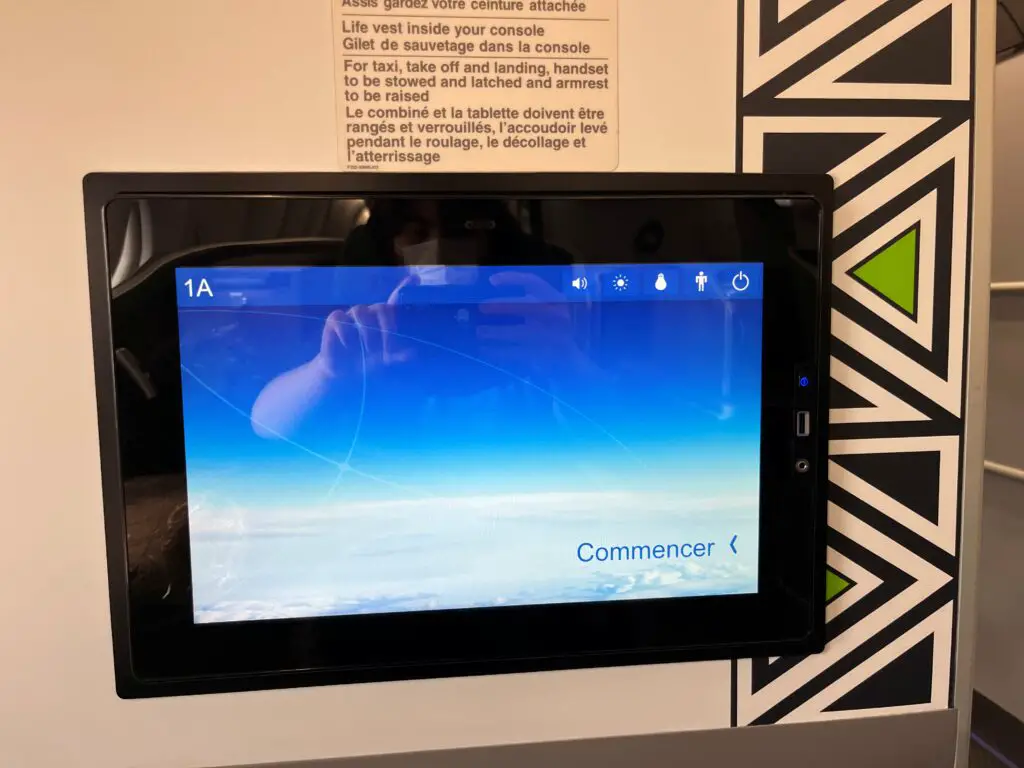
At 17h49 pushback started, four minutes after scheduled departure. Engines were started and it’s good to see how quiet the A330 is, especially in the forward parts of the cabin.
Taxi followed quite soon and again, things you can only see in Heathrow. A LATAM Brasil 777-300ER, a Capital Airlines A330, likely doing a cargo rotation to/from China, and then a line-up of three Virgin Atlantic widebodies.
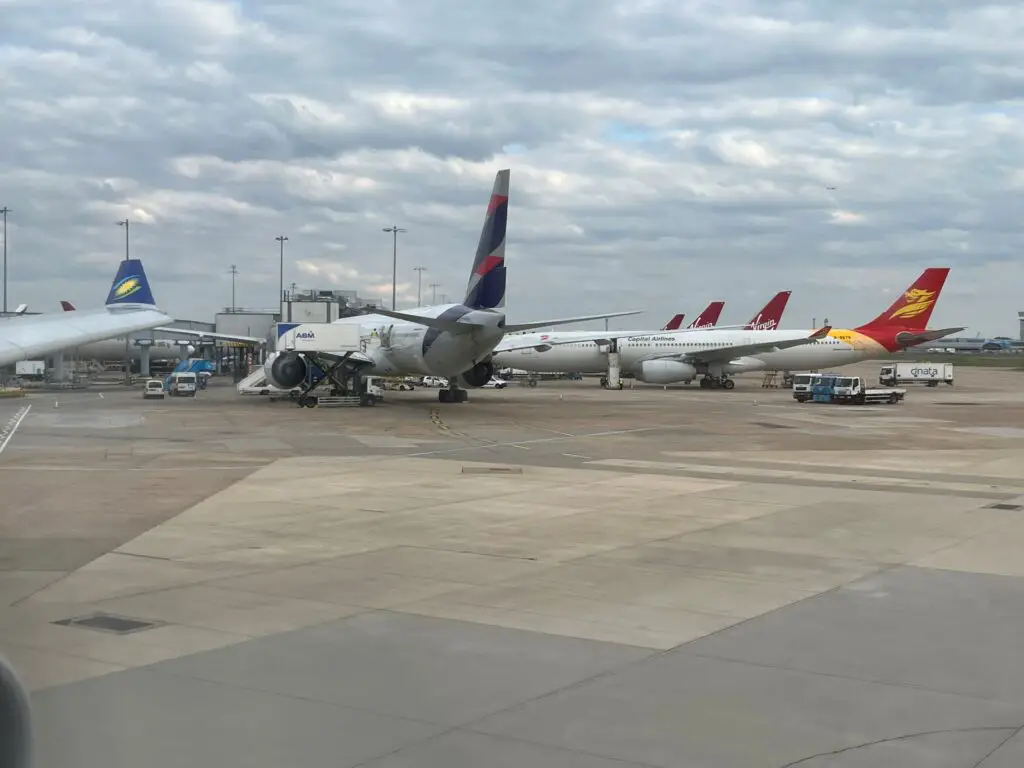
After waiting for a bunch of other departures, at 18h03 9XR-WN took-off easily from Heathrow, aided by the pair of Rolls-Royce Trents. Captain Erwan, who were aided by FOs Louis and Gerald for that pair of flights, handled the A330 with care. And the airplane responded beautifully.
Weighing 145,885kg, of which 12,000 were fuel, we were a far cry from the aircraft’s operational limit of about 251,000kg. Our speeds (V1, VR and V2) were, respectively, 136, 136 and 141 knots.
As this was a short flight and all passengers would continue to Kigali, service was brief and consisted of drinks only. This time I got the red wine — also good — and the orange juice. As soon as they were over, we left our cruise altitude of 23,000 feet to start our descent into Brussels’ Zaventem airport.

And sure enough, at 19h43, twelve minutes before schedule, we made a smooth landing in Brussels’ main airport, crossing the runway threshold at a Vref of 130 knots.
The end-of-flight screen showed one of Rwanda’s most important natural attractions — the mountain gorilla: an important part of its population is spread across one of their national parks.
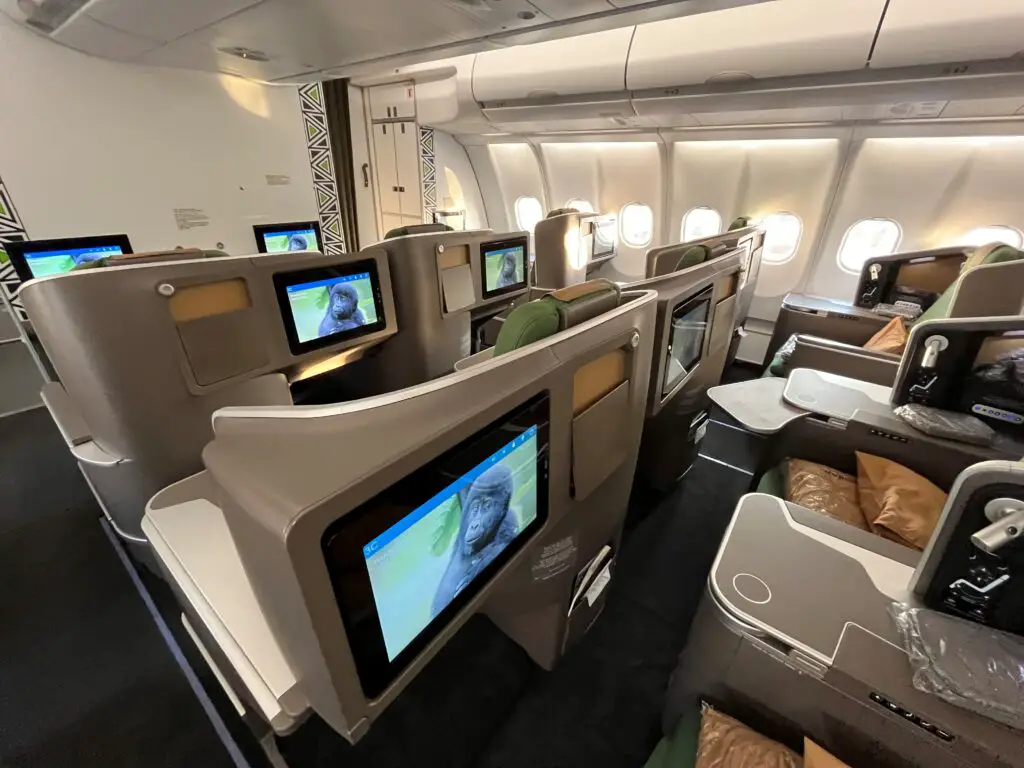
The turnaround was also a good opportunity to visit the lavatory, which is just your standard A330 toilet. It was clean, by the way.
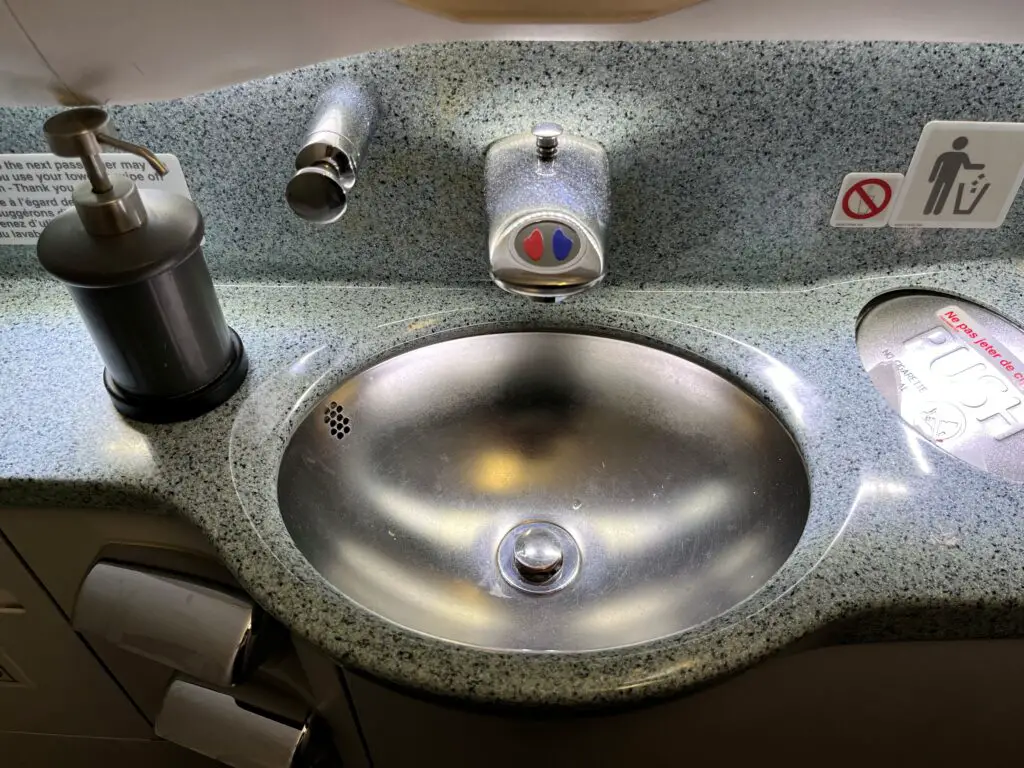
WB701 BRU-KGL
Soon boarding for the Brussels passengers started, which happened quite quickly. Economy class wouldn’t be really full, with 105 customers onboard, while Business Class had 10 passengers. Overall, there were 131 people on board.
Our pushback happened on scheduled time, but as the engines were being started… something went wrong.
The crew told us from the cockpit there was a sensor telling them something was not right with one of the engines upon start-up, and thus we had to be towed back to a remote position so the Brussels technicians could look into it. Luckily our connection in Kigali was supposed to last some four hours, so we were still quite safe.
While that obviously is not ideal, safety always comes first. The flight deck team kept us informed of the current situation for two or three times through the delay, and the flight attendants seemed to handle the frustration from passengers quite well, too.
While our schedule said departure was supposed to be at 21h00, it took them over an hour to sort things up. At around 22h35, Captain Erwan commanded the thrust levers ahead and 9XR-WN started running through the runway.
While way heavier than in the previous flight, we were still very far from the maximum take-off weight of about 251 tons; with 55 tons of fuel, the aircraft weighed 204,423kg.
As we reached the decision (and rotation speed) of 147 knots, we finally started lifting off from Brussels, some 95 minutes late. V2 speed was of 153 knots.
Climbing to an initial cruising altitude of FL370, it did not take the cabin crew long to start the onboard service. In the mean time, a further look into RwandAir’s ammenity kit. Minimalistic from the outside…
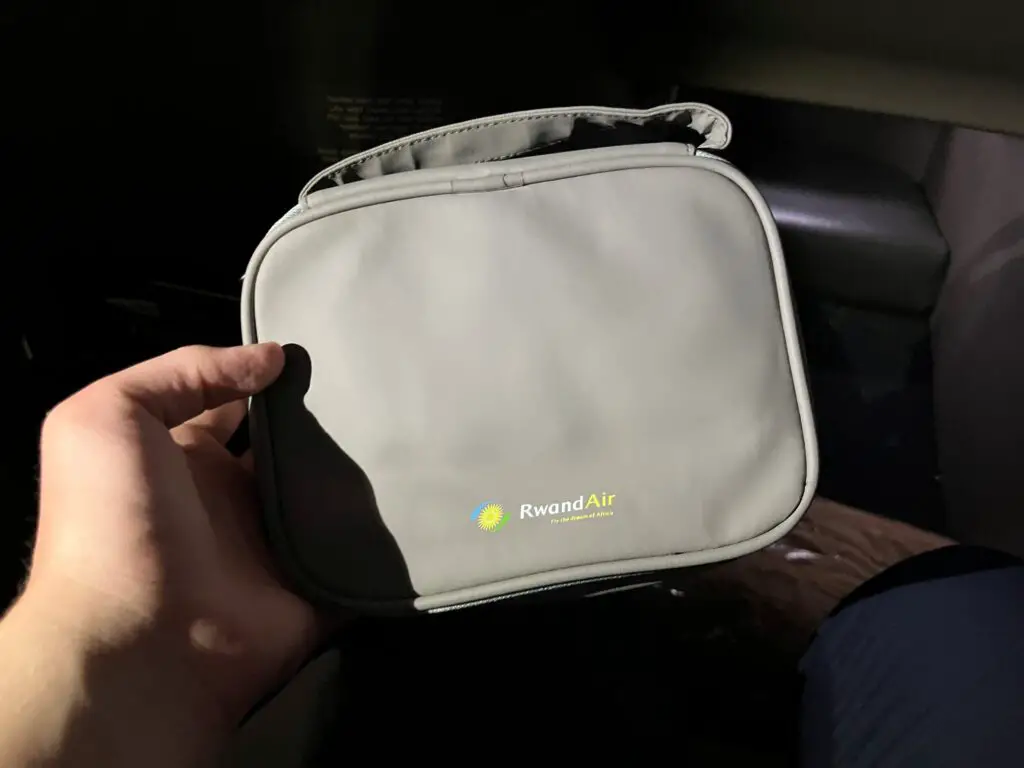
…quite honest on the inside. The socks they gave were very comfortable for the sleep I would have an hour later.
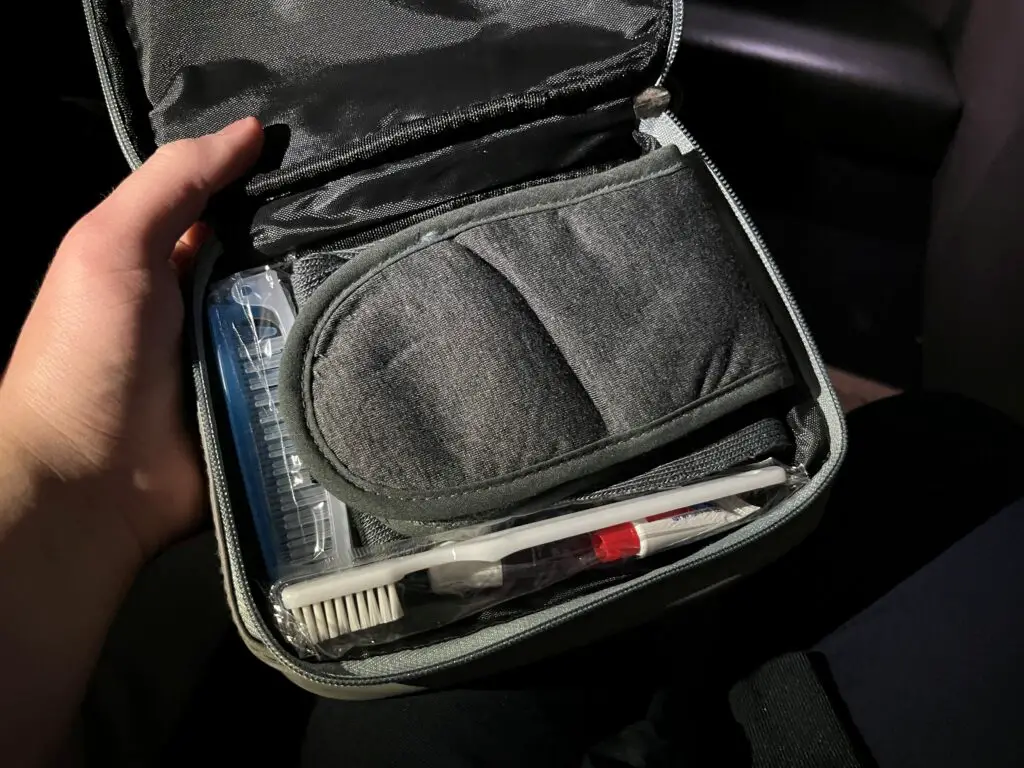
Because it was late (and all those timezone changes took a toll), I left the on-demand entertainment screen on the flight during the onboard service — after which I turned it off.
The screen was very responsive and the on-demand library was small, albeit from the little I searched on, it was what you’d see in most airlines around. It helped, too, that each seat has power sockets, so that was the most important for now.
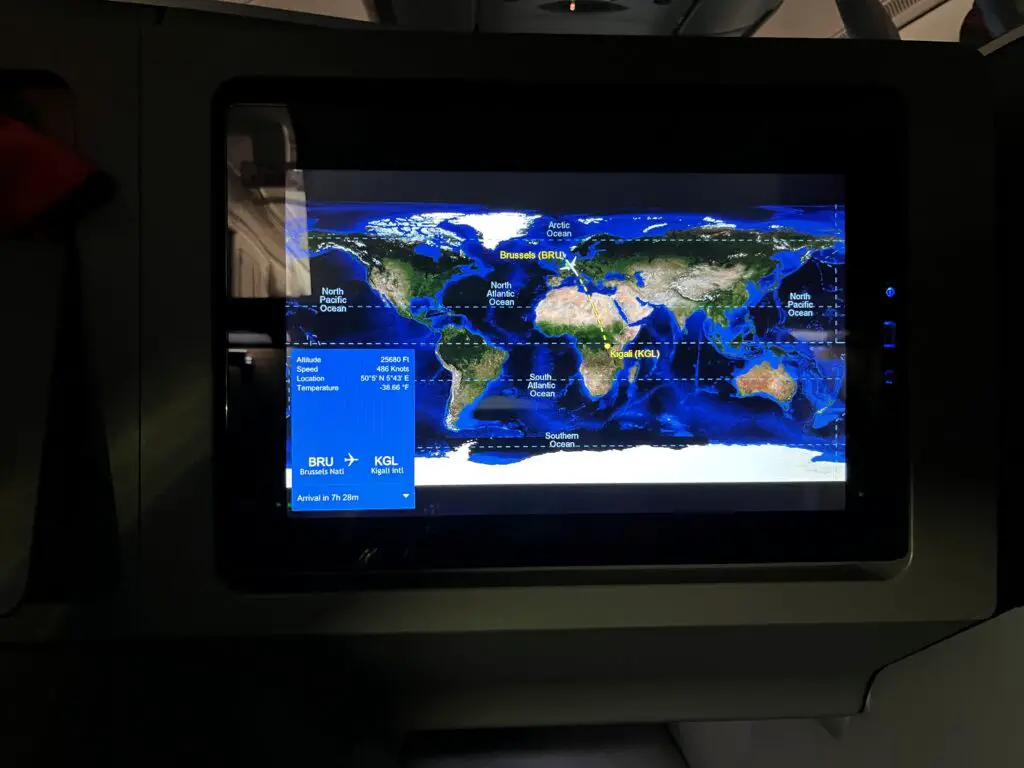
RwandAir prints their menus now, on a pretty paper and with their own colourful branding on the cover.
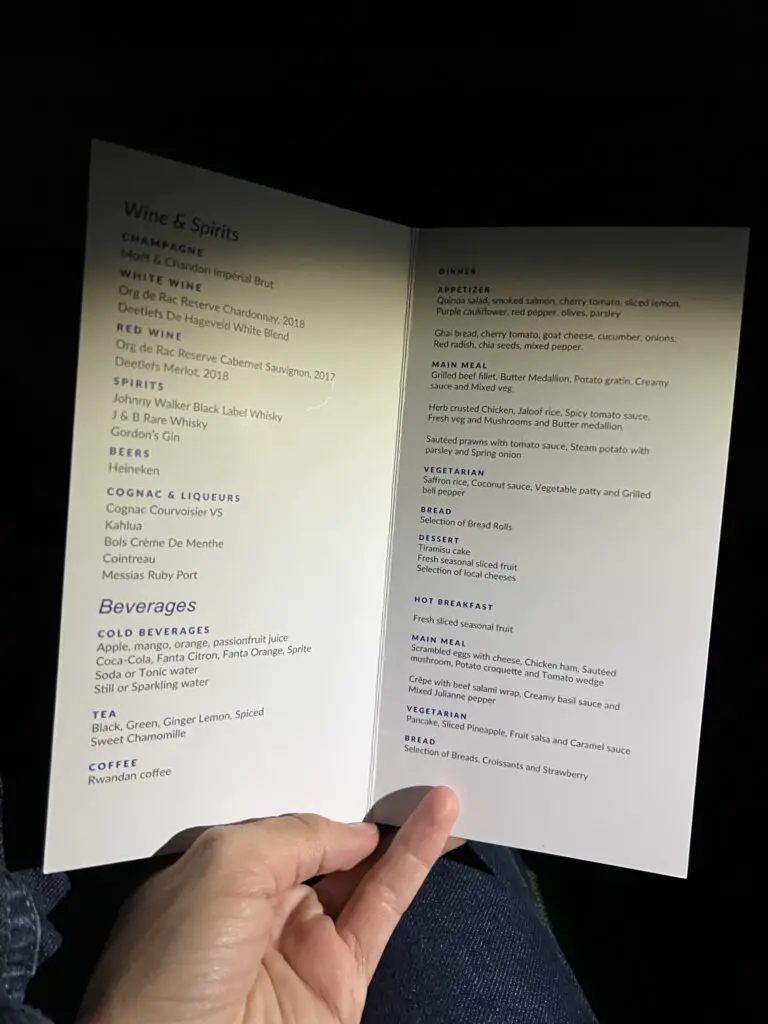
I took the beef fillet option, along with a glass of beer. It tasted quite good, the meat was soft and the potato gratin side was also great.
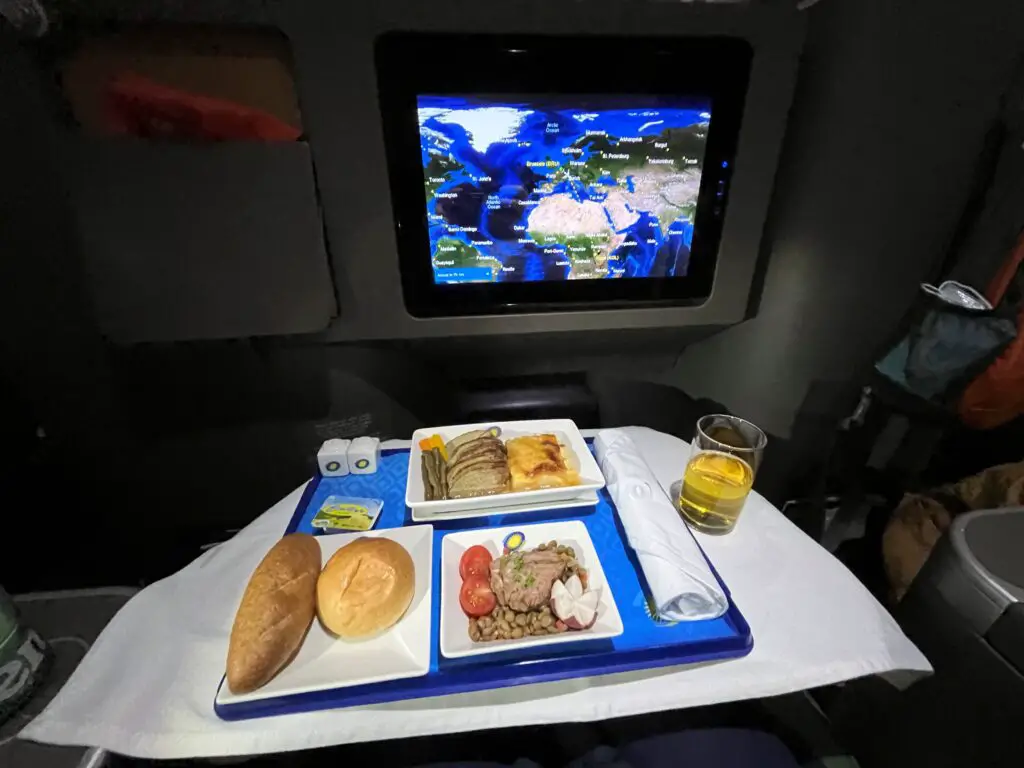
The appetizer, too, was fine (though it didn’t look like smoked salmon?), as was the bread selection, but the main plate was the better of the two. All in all, though, a good dinner: a fine look with the branded platters and cutlery. It all looked simple, yet very enjoyable.

Another look at the main: it looks quite simple, but it tasted like homemade beef.

For the dessert, ending in a sweet style with this tiramisu cake.
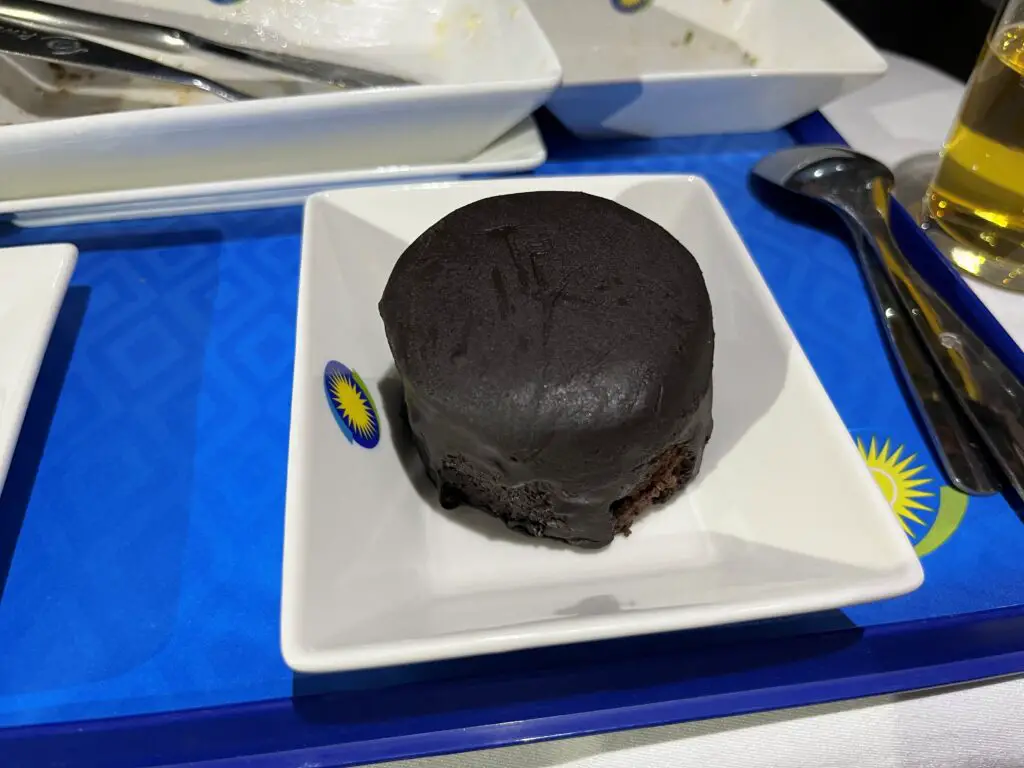
After the service, I turned off the screen, went to the lavatory to put the pair of socks from the ammenity kit (really comfortable) to try to get some sleep.
That attempt was very successful; while RwandAir does not offer turndown service in Business Class, their seats do go full flat and they were quite comfortable in that position. The blanket and the pillow were good and worked; in only a few minutes I was sleeping.
While we cruised at our final altitude of FL390, I didn’t wake up at all, which (I guess) meant the flight went very smoothly as we crossed our planned route.
In time, the flight attendants — and I say this for all flights we did with RwandAir — were all very professional. At times they seemed quite distant, but it always looked that they were trying to provide a good onboard experience, which is what matters anyway.
And by the way, in most speeches in all flights, the pursers always spoke in three languages: English, French and Kinyarwanda — three of the four official languages of Rwanda. The speeches might be already in their heads after so many flights, yes, but it was so cool to hear them transition from one language to the next (let alone such structurally different languages) with such ease.
I managed to sleep for almost the rest of the flight, being woken up only for the breakfast service right as we were ready for descent into Kigali. As I was not really hungry, I just got two breads and a cup of coffee.

In no time we had started our descent into Rwanda’s main airport.
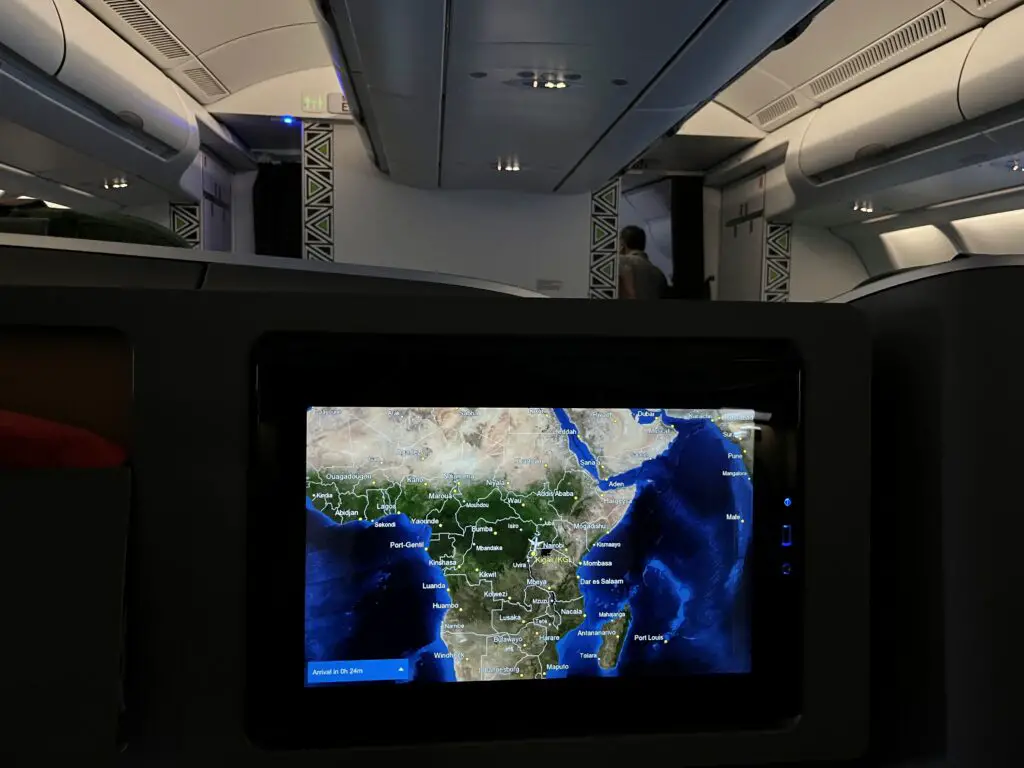
Despite the departure delay of almost 100 minutes from Brussels, we entered the runway at a Vref speed of 134 knots, WB701 arrived with a smooth landing in Kigali International Airport at around 06h20 local time, 50 minutes after schedule.
Taxi was very short as Kigali as their current airport is very small: a new one is in the making, though.
After waiting for deboarding, we managed to make a visit to the cockpit, talking to the pilots that took us to Rwanda.
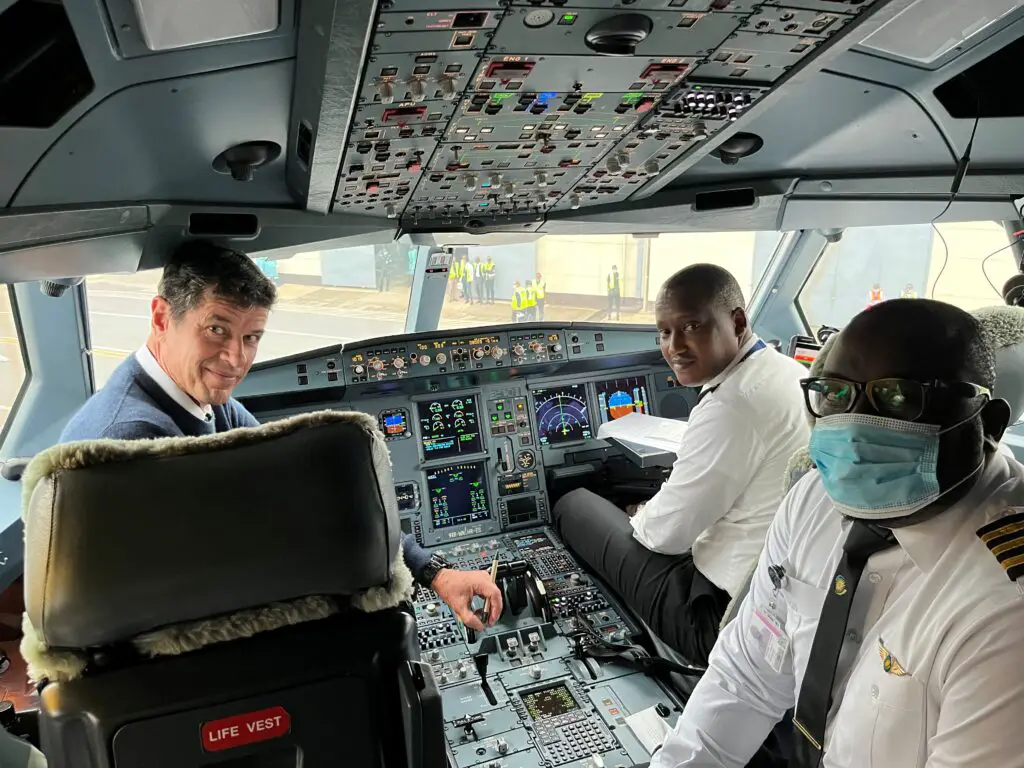
We waved goodbye to the crew and got out of the plane, where a RwandAir press assistant was waiting for us. Luckily, we had been cleared to do some pictures in the apron that morning before we got into the terminal (wait for part three of this series!).
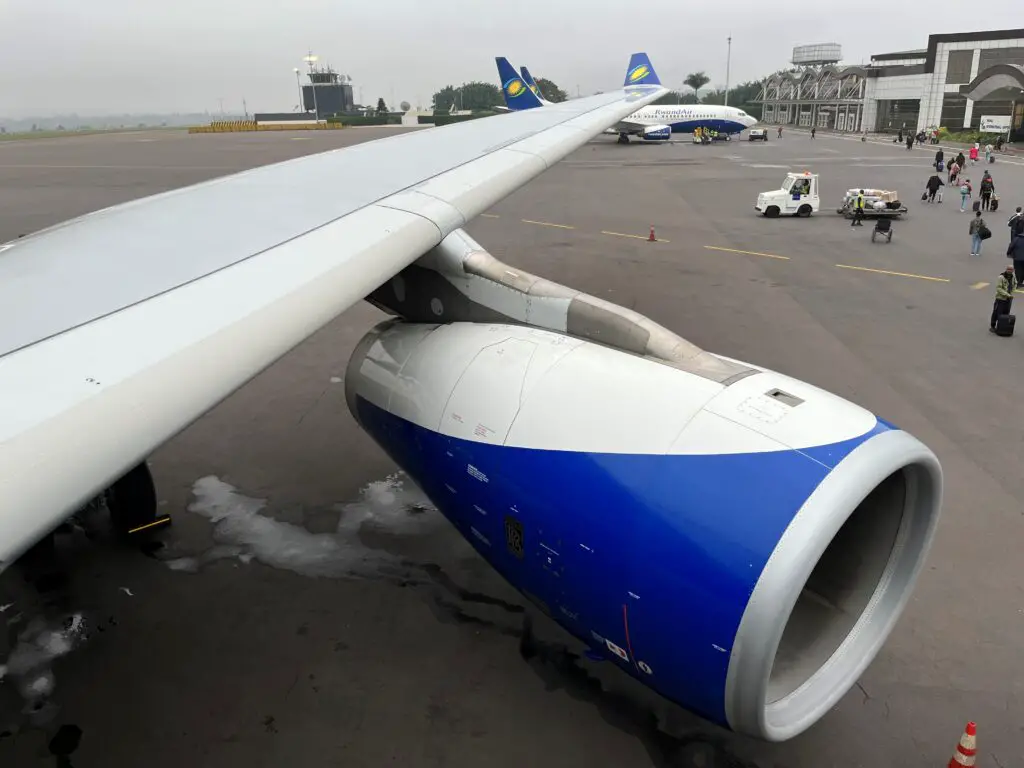
We would have flown 9XR-WN again upon returning to Europe the following evening.
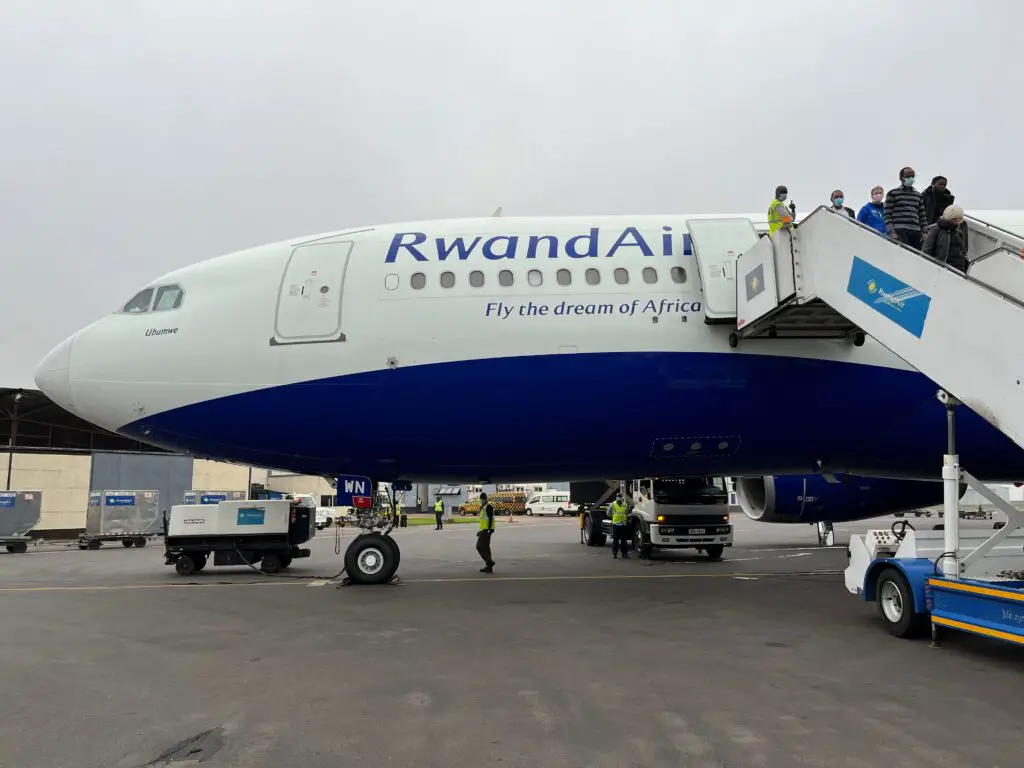
Now we had some pictures to do and then a two-and-a-half hour connection before boarding to our next flight.
Final remarks
Rwanda has still a long way to go to become a nation with a high GDP per capita or a high HDI. But if they want to become a service-based economy that is fully integrated to the rest of the world, especially as a landlocked country, there is no wonder that aviation is one of the answers.
The flight might have been delayed, but since it was not an operational failure, and given the fact that the crew did what they could to keep everyone at ease and up to date with the developments of the troubeshooting, that was good to see (though it should be the minimum one could expect from any airline).
As far as the product offering goes, I think RwandAir has a very competitive proposal. The service in long-haul Business Class is indeed very good. If we compare it to other Subsaharan Africa major airlines in activity, namely Ethiopian and Kenya Airways, there is not really much more that RwandAir can do to be close to them.
The service was super professional and you could see the crew was doing their best to provide a pleasant flight to all; the cabin was really well decorated and I had a good flight of sleep with the lie-flat seats; catering was very decent; so that was a very nice overall experience.
Lastly, the catch with RwandAir for most passengers, if they keep their growth aspirations, will be the connection in Kigali; whether that is good or not is definitely going to be very important. But that is something we will look further in the next part of this series.
But for now, as far as RwandAir’s long-haul product is concerned, they definitely have the tools to be one of the nicest ways to get from the Northern Hemisphere to Subsaharan Africa.

